MagSafe: Effortless and wireless charging for iPhones
Buy one of the latest iPhone models, and you will know that you have to buy a charger for it. However, you might be surprised that it accepts MagSafe chargers. Instead of the little nib tip, it has a disc that attaches to the back of your phone via magnet.
You will also notice this type of wireless charging as a feature for the latest Android devices. MagSafe is the newest technology, but is it truly worth it? It is a good question because it might become the norm for upcoming mobile devices.
Let us begin the discussion by sharing more details about MagSafe technology. Then, we will go through the various types of MagSafe chargers available. More importantly, we will discuss whether or not you should get a MagSafe charger for your next phone.
Overview of MagSafe chargers
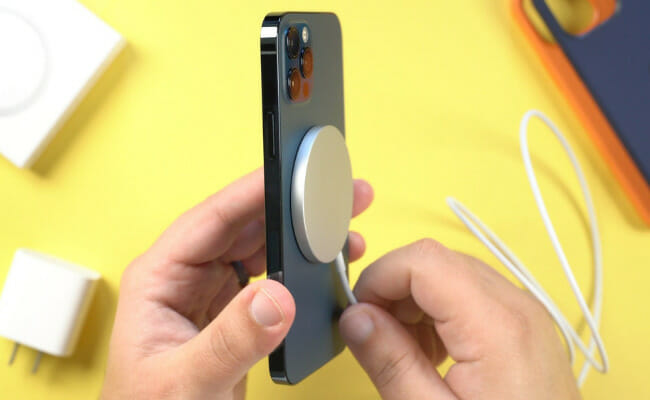
Photo Credit: www.macrumors.com
Android users might be impressed by this novel method of wireless charging. If you are a long-time Apple fan, you have probably used a MagSafe charger years ago.
The first MagSafe charger came out in 2012 for Mac laptops. As the name suggests, it uses “Magnets” to keep your mac “Safe.” What was it securing it from back then?
The Apple MagSafe charger kept the MacBook from being yanked by the cable. It would just detach from the device so that the MacBook can stay in place.
In 2016, Apple switched from this wireless charging standard to USB-C. The tech firm has pushed the USB-C to its limits, so it needed another solution.
It turns out that it would come as a blast from the past: the Apple MagSafe charger. At the time of writing, its latest version is the MagSafe 3. Yet, it works similarly to the previous iterations.
The wireless charger has a small rectangular connector that matches a five-pin slot. The connector has a magnet on top that secures the fit.
The other end of its cable has a port that plugs into a USB-C power adapter that powers the Mac. The tech firm meant this transition for the 16-inch MacBook Pro.
The Apple MagSafe charger is also available for the iPhone, but it works differently. Instead of a single magnet, it uses a Qi-certified charger that contains a ring of magnets.
On a side note, the word “Qi” is Chinese for “energy.” Anyway, the coils of the Qi-certified charger lets it maintain a snug fit and provide faster wireless charging.
The iPhone 12 and iPhone 13 models use the magnet ring to connect to other accessories with magnets, such as the iPhone wireless charging case.
Instead of a small rectangular port, it has a disc. The perfectly aligned magnets attach to the iPhone 12, iPhone 13, and the wireless charging accessories.
MagSafe Charger
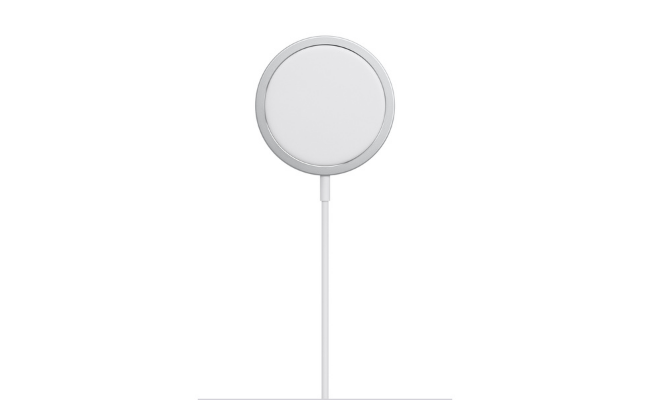
Photo Credit: www.apple.com
At the time of writing, there are two options for iPhone wireless charging: the MagSafe and the MagSafe Duo. The first one looks like a round puck that works simply enough.
The perfectly aligned magnets attach to the back of the iPhone. Plug the other end into an outlet to wirelessly charge your smartphone. It can replenish the iPhone 12 battery at a maximum of 15W,
This number represents the MagSafe Wireless charger’s power to load into your iPhone. A higher amount of Watts (W) number means faster wireless charging.
If you have an iPhone 12 mini, the wireless charger can only provide up to 12W. If you want a higher rate, you will have to buy Apple’s 20W USB-C power adapter.
MagSafe Duo Charger
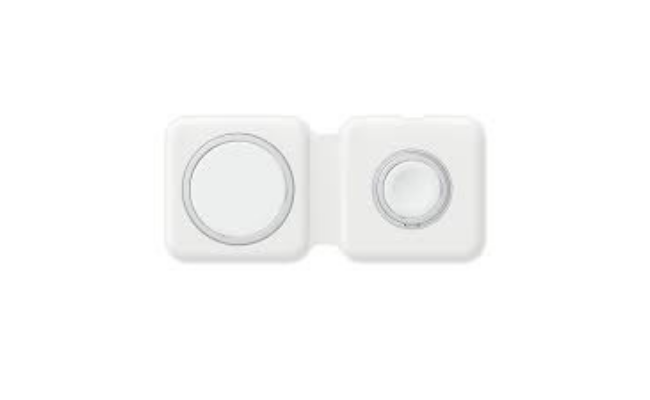
Photo Credit: www.apple.com
If you have an Apple Watch, you might want to buy a MagSafe Duo charger instead. It looks like a foldable rectangle case that folds out to reveal two charging docks.
The larger disc is for iPhones, and the smaller one is for Apple Watches. They allow you to charge the devices at the same time wirelessly.
Interestingly, the Duo is more portable than regular MagSafe chargers. Folding it allows you to bring two chargers simultaneously. However, the Duo has a similar issue with the other MagSafe version.
It will not let you wirelessly charge your iPhone 12 mini and 13 mini at the maximum 15W. Again, you can only do that if you have Apple’s 20W USB-C power adapter.
Third-party MagSafe Chargers
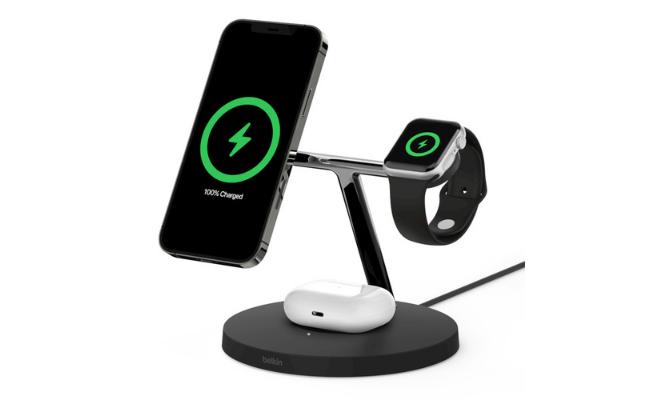
Photo Credit: www.belkin.com
Apple isn’t the only one that provides MagSafe chargers. You can find numerous brands that have their versions of the wireless charger.
Many of them allegedly provide a 15W charging speed. However, you will have to be careful when buying third-party accessories. Not all MagSafe chargers follow the standards set by Apple.
An off-brand wireless charger could damage your smartphone. Worse, it could cause electrical failures resulting in a fire hazard! Make sure you choose reputable options like the Belkin Boost MagSafe charger.
Benefits of MagSafe chargers
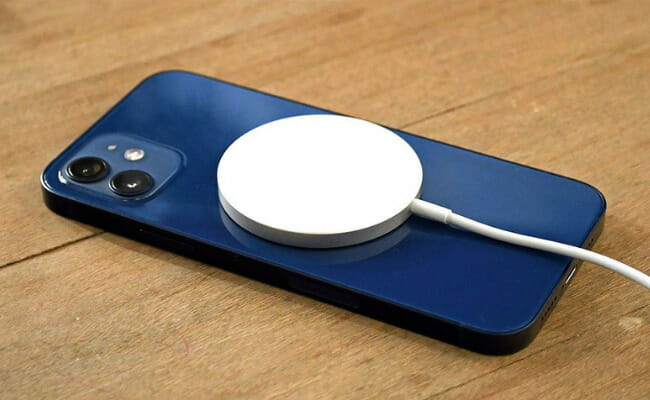
Photo Credit: blog.ugreen.com
Adopting new technologies often brings many advantages over the previous ones. If you are thinking of buying these chargers, learn about their benefits below:
- These magnetic wireless chargers are convenient. You will not have to worry about their cables tangling or snagging into things. Also, you won’t have to fumble with connecting the USB-C or Lightning port anymore. Place your iPhone on the MagSafe, go to bed, and wake up to a fully-charged battery.
- MagSafe is also a great choice if you need to charge your phone while driving. Instead of fumbling with the connector, plop your iPhone on the charging puck.
- The magnetic wireless charger allows for fast charging. The MagSafe charger maintains compatibility with the Qi wireless charger, working with older iPhone models.
- MagSafe can reach up to 15W, while the Qi only provides 7.5W. Note that you will have to get an Apple power adapter that reaches 20W or higher.
- What’s more, you avoid the wear and tear often associated with a charging cable. People constantly pull out and push in the cord, straining it. On the other hand, magnetic wireless chargers stay put, so their cord is more likely to last longer.
- Apple offers a wide range of MagSafe accessories, such as a wireless charging case. You can keep it on during the charging process. Other cases do not support wireless charging, so you will have to take them off before charging your phone.
Do you need a MagSafe charger?
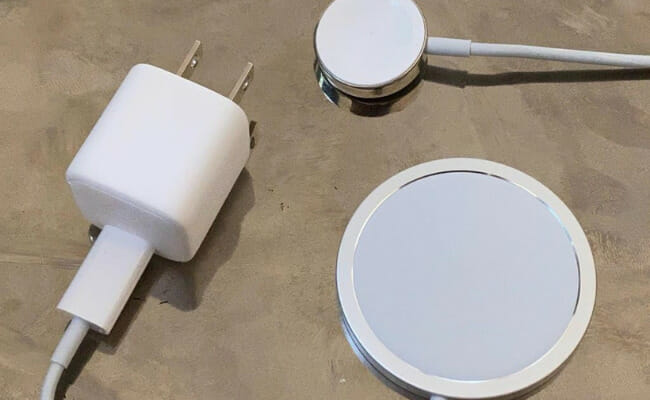
Photo Credit: venturebeat.com
This wireless charging technology is not without its flaws. You should also consider them before purchasing a MagSafe. Check the list below to learn more:
- The plug chargers still replenish batteries faster than wireless options. MagSafe could charge at the same rate, but you’ll have to pay extra for the required adapters.
- These charging gadgets are expensive. The regular MagSafe charger costs $39.00, while the MagSafe Duo is worth $129.00.
- Ironically, MagSafe is not entirely wireless. The charging puck still has a cord with a power outlet plug. You can only use this feature at a place with a power outlet.
- The charging disc can accumulate heat that reduces the charging output. Also, that heat eventually leaves a mark on your iPhone case.
Read More: What Are The Features Of The iPhone 13?
Tips when using MagSafe chargers
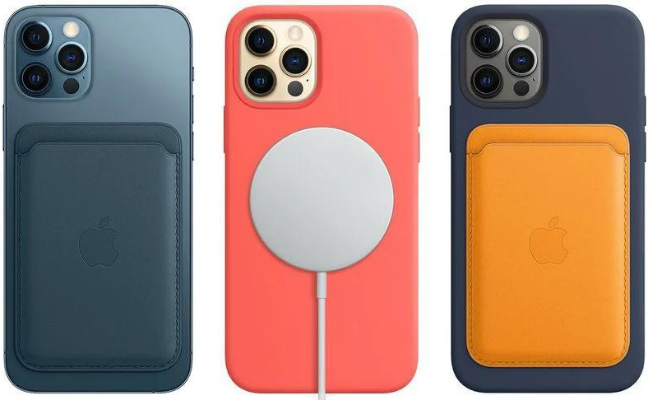
Photo Credit: www.macrumors.com
Once you have your new wireless charger, you should keep a few pointers in mind. Take a look at these tips from Apple:
- The MagSafe charger maintains compatibility with Qi-compatible devices. Using the Duo, you will experience longer charging times than a regular Qi charger.
- The Duo works with all versions of the iPhone 13. Get an Apple USB-C Magnetic Fast Charging Cable if you need to charge your Apple Watch Series 7.
- Make sure your credit cards, passports, security badges, or key fobs are not between the iPhone and the MagSafe Duo. Otherwise, you might damage their magnetic strips and chips. Remove them first before charging.
- If you connect your iPhone to a Duo charger and a Lightning port, it will refill the batteries using the latter.
- As mentioned earlier, wireless chargers can quickly accumulate heat. If it gets too hot, the iPhone limit charging above 80%. Keep the temperature down before use.
- If your wireless charging case is leather, it will show ring marks as time passes. This reaction is normal. Use a non-leather wireless charging case if you want to avoid this issue.
- Note that the hinge of the Duo will wrinkle over time due to heat and stress. This damage will not harm the performance of your charger.
- Clean your charger using a soft, lint-free cloth. Wipe it gently to avoid scratches or other forms of damage. Avoid using liquid cleaners such as bleach, aerosols, and rubbing alcohol.
- Do not leave your devices unattended while they are plugged in or charging. Otherwise, you risk damaging your iPhone and charger and sparking electrical fires.
Related Articles
Conclusion
MagSafe technology is a nifty and trendy way of recharging your iOS and Mac devices. You leave your phone on the charging disc, removing the hassle of plugging in cables.
Note that this charging tech is best with the iPhone 12 and 13. If you have not bought one, perhaps this is a great time to grab the latest Apple devices.
Remember that they do not include a MagSafe charger in the box. It is best to buy one from a genuine Apple retailer or reseller. Otherwise, make sure to purchase third-party chargers only from reputable brands.
Frequently Asked Questions (FAQs)
What is special about a MagSafe charger?
A MagSafe charger attaches itself to the back of your phone. You will not have to worry about untangling cords or plugging them into your device.
Is it worth getting a MagSafe charger?
If you prefer wireless charging, this charger might be for you. Note that you will have to buy a 20W charger if you want it to charge your iPhone quickly.
What is the difference between MagSafe and wireless charging?
As the name suggests, MagSafe keeps your phone attached via magnets. On the other hand, this is not a typical feature for wireless chargers.

